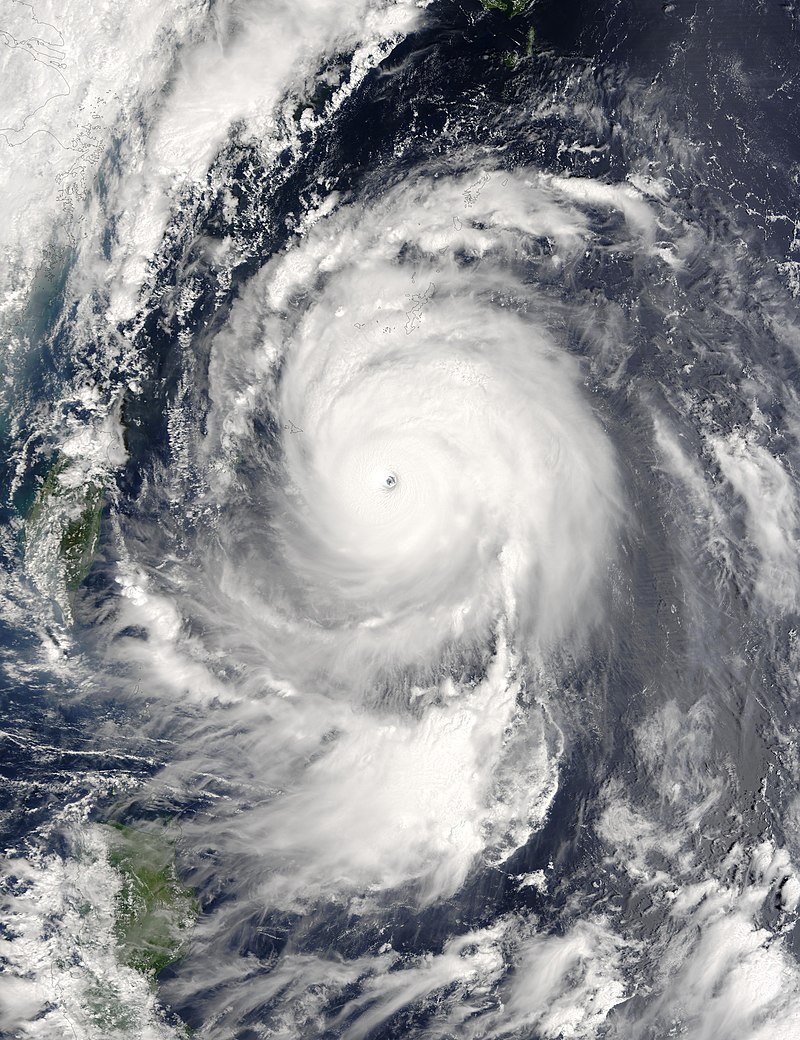Typhoon

Typhoon Maemi (pronounced [mɛ.mi]), known in the Philippines as Typhoon Pogi,[1] was the most powerful typhoon to strike South Korea since record-keeping began in the country in 1904. Maemi formed on September 4, 2003 from a disturbance in a monsoon trough in the western Pacific Ocean. It slowly intensified into Tropical Storm Maemi while moving northwestward, becoming a typhoon on September 8. That day, favorable conditions facilitated more rapid strengthening; the storm developed a well-defined eye and reached peak maximum sustained winds of 195 km/h (120 mph).[nb 1] While near peak intensity, Maemi decelerated and began turning to the north-northeast. Soon after, the eyewall passed over the Japanese island of Miyako-jima on September 10 and produced an air pressure reading of 912 mbar (26.9 inHg), the fourth-lowest recorded in the nation. Due to warm waters, Maemi was able to maintain much of its intensity before it made landfall just west of Busan, South Korea, on September 12. The typhoon became extratropical in the Sea of Japan the next day, although its remnants persisted for several days, lashing northern Japan with strong winds.
Battle of the Aegates

The Battle of the Aegates was a naval battle fought on 10 March 241 BC between the fleets of Carthage and Rome during the First Punic War. It took place among the Aegates Islands, off the western coast of the island of Sicily. The Carthaginians were commanded by Hanno, and the Romans were under the overall authority of Gaius Lutatius Catulus, but Quintus Valerius Falto commanded during the battle. It was the final and deciding battle of the 23-year-long First Punic War.
The Roman army had been blockading the Carthaginians in their last strongholds on the west coast of Sicily for several years. Almost bankrupt, the Romans borrowed money to build a naval fleet, which they used to extend the blockade to the sea. The Carthaginians assembled a larger fleet which they intended to use to run supplies into Sicily. It would then embark much of the Carthaginian army stationed there as marines. It was intercepted by the Roman fleet and in a hard-fought battle, the better-trained Romans defeated the undermanned and ill-trained Carthaginian fleet, which was further handicapped by being laden with supplies and having not yet embarked its full complement of marines.
As a direct result, Carthage sued for peace and agreed to the Treaty of Lutatius, by which Carthage surrendered Sicily to Rome and paid substantial reparations. Henceforth Rome was the leading military power in the western Mediterranean, and increasingly the Mediterranean region as a whole.